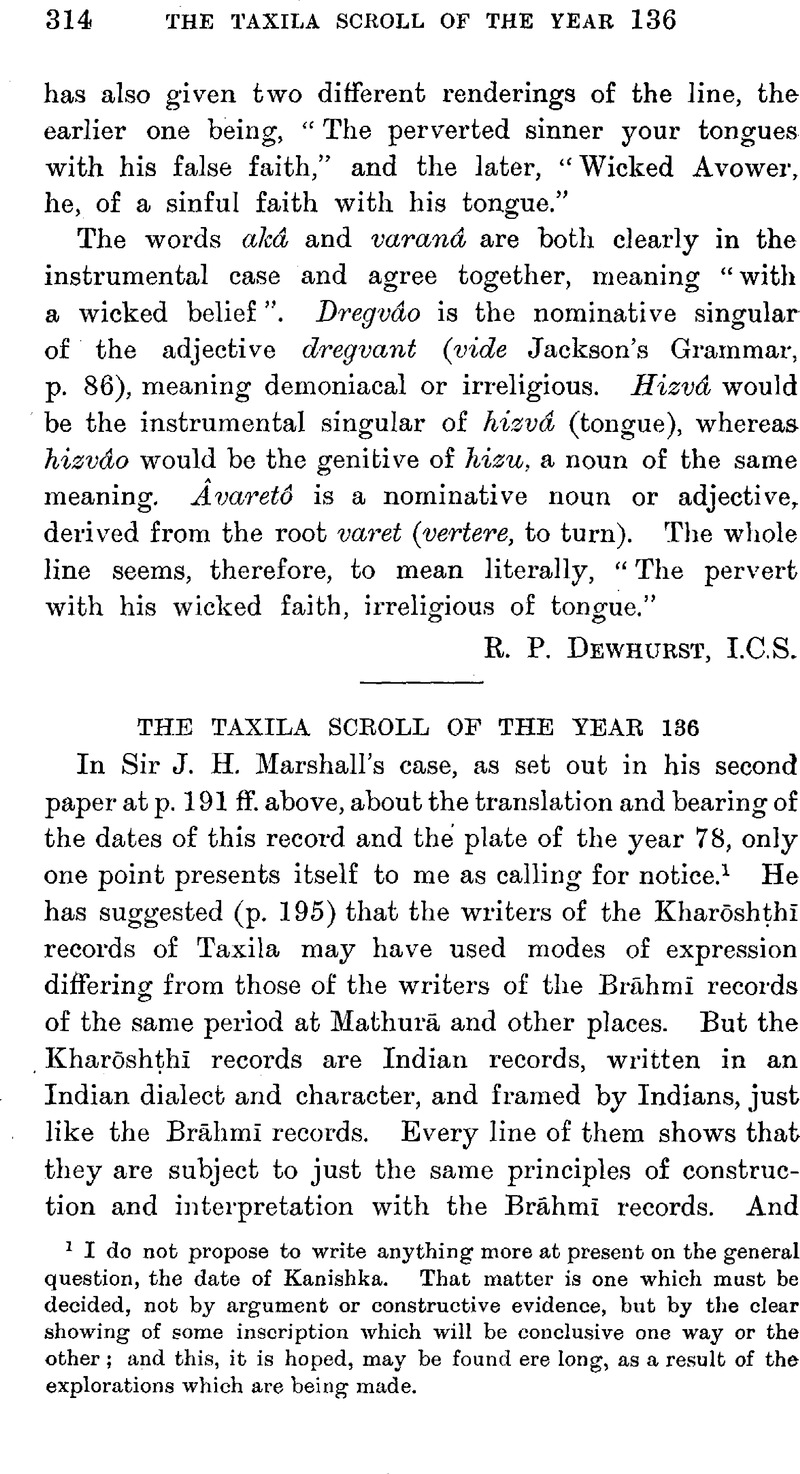No CrossRef data available.
Article contents
The Taxila Scroll of the year 136
Published online by Cambridge University Press: 15 March 2011
Abstract

- Type
- Miscellaneous Communications
- Information
- Copyright
- Copyright © The Royal Asiatic Society 1915
References
page 314 note 1 I do not propose to write anything more at present on the general question, the date of Kanishka. That matter is one which must be decided, not by argument or constructive evidence, but by the clear showing of some inscription which will be conclusive one way or the other; and this, it is hoped, may be found ere long, as a result of the explorations which are being made.
page 315 note 1 JRAS, 1914, p. 992.Google Scholar
page 315 note 2 See my remarks in JRAS, 1907, p. 1014Google Scholar. I ought perhaps to have repeated them in my previous paper on the record of the year 136.
page 315 note 3 Epi. Ind., vol. 4, p. 56.Google Scholar
page 316 note 1 Sir J. H. Marshall, indeed, has suggested, (p. 193) that it might be urged that the scribe wrote what he did not intend to write. In support of such a claim, it could be pointed out that the record certainly has some strange mistakes; for instance, in line 2 there seems to be an omission of the vowel e, so that we have putrana (gen. plur. ) instead of putrena (instr. sing.); in line 3 the la of Tachhaśilae has certainly been omitted; so also in line 4 the tva of sarva-satvana was omitted; and in line 5 there is an omission of the da of salohidana, if that was the intended word. With such instances before us, we might quite reasonably find here, too, some important omission or other mistake. But we will accept the word as it actually stands.
page 317 note 1 JRAS, 1914, p. 976.Google Scholar
page 317 note 2 See fully my remarks in JRAS, 1914, p. 997.Google Scholar
page 317 note 3 Pischel, , Grammatik der Prākrit-Sprachen, § 429Google Scholar. I had overlooked these forms when I wrote my previous paper. Pischel has referred them to the stem idam; in preference to ētad according to the Indian grammarians.




